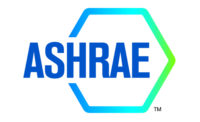"While the purpose of the standard has remained consistent since it was first published in 1973, the means of achieving the goal of providing acceptable indoor air quality have evolved," David Butler, chair of the Standard 62.1 committee, said. "The 2004 standard provides users with better tools to help get the job done."
The standard incorporates 17 addenda. Among the major changes is revision of the Ventilation Rate Procedure to reflect recent information regarding ventilation impacts on IAQ and to clarify the adjustments necessary for space air distribution and system efficiency of multi-zone recirculating systems.
The breathing zone ventilation rate now includes both an area-related component and an occupant-density-related component, which are added together to determine the required ventilation for the space, Butler said.
The IAQ Procedure was modified by converting the material in the standard into requirements that are stated in mandatory and enforceable language. Also revised was the minimum ventilation rate table to apply only to no-smoking spaces by deleting smoking lounges from the list of occupancy categories. Also, some rates were lowered based upon their application to no-smoking spaces only. For smoking-permitted spaces, additional (but unspecified) ventilation in excess of the rates listed in the table is required.
The standard also includes a new informative appendix, Appendix G, Application and Compliance, which provides guidance on when the standard applies to new and existing buildings. It also contains a code-intended language version that could be adopted by jurisdictions that have not adopted a building code.
The standard is written in fully mandatory and enforceable language, completing a process that began in 1997.


